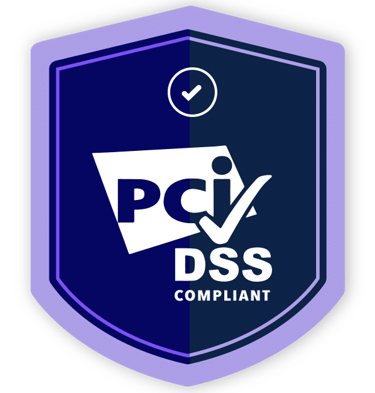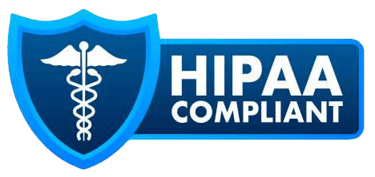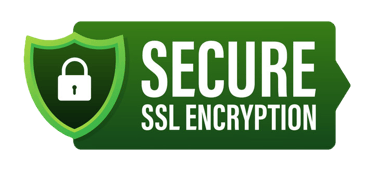The HOPE Tool Is Here: A Complete Guide for Hospice Leaders
Discover how the new Hospice Outcomes & Patient Evaluation (HOPE) tool will replace HIS on October 1, 2025. Learn HOPE timepoints, SFVs, compliance rules, and how hospices can prepare with HealthBridge Consulting.


Hospice Outcomes & Patient Evaluation (HOPE) is the new, standardized assessment that all Medicare-certified hospices will use for quality reporting. Beginning October 1, 2025, HOPE replaces the Hospice Item Set (HIS) for patients admitted on or after that date, with all HOPE data submitted to iQIES (not QIES). In other words, your quality reporting workflow, timepoints, software, and submission pathways are changing—soon.
CMS designed HOPE to capture patient-level data in real time, aligned with clinical encounters, to better inform the plan of care and quality improvement activities. It’s not just a new form; it’s a tighter connection between assessment, care planning, and reporting. HOPE’s objectives are to strengthen the Hospice Quality Reporting Program (HQRP), support survey/certification, and inform future payment and quality refinements.
What’s changing at a glance (vs. HIS)
Assessment timing expands beyond admission/discharge. HOPE requires assessments at admission, two update visits (based on length of stay), and discharge—plus a Symptom Follow-Up Visit (SFV) when triggered by moderate or severe symptom impact.
Real-time, encounter-based data capture. HOPE items mirror routine clinical assessments and are meant to be documented during or immediately around patient visits—feeding plan-of-care updates and QAPI.
Submission shifts to iQIES. HOPE data go to iQIES starting October 1, 2025; HIS remains in QIES only for discharges up to September 30, 2025.
Compliance standard and penalty. HQRP remains pay-for-reporting; however, non-compliance brings a 4-percentage-point APU reduction (increased from 2pp effective FY2024 and forward).
The HOPE timepoints, explained
CMS expects up to four HOPE records per hospice admission, depending on length of stay:
Admission (ADM)
When: No later than 5 calendar days after the effective date of hospice election (Day 0 = election date).
What: Baseline data that accompany the comprehensive assessment; informs the initial plan of care.
HOPE Update Visit 1 (HUV1)
When: On or between Days 6–15 (must not occur within the first 5 days).
What: An in-person visit to reassess and update the plan of care. Must be performed by an RN.
HOPE Update Visit 2 (HUV2)
When: On or between Days 16–30 after the hospice election (if the patient remains on service into this window).
What: A second in-person update to the plan of care; again, RN-conducted.
Discharge (DC)
When: At the time of discharge, for any discharge reason (expired, revoked, transferred, moved, no longer terminally ill, for cause, etc.).
If HUV timing is late or missed: CMS instructs hospices to conduct it as soon as possible and submit when complete; late HUVs are still accepted in iQIES. HOPE submissions need not be strictly in sequence—HUV2 can be accepted even if submitted before HUV1.
The Symptom Follow-Up Visit (SFV): what triggers it and who can do it
The SFV is a separate, in-person follow-up required within two calendar days when the Symptom Impact item at Admission or either HUV indicates moderate or severe impact (pain or non-pain symptoms). Up to three SFVs may be required over a stay (one for Admission, one for each HUV if triggered). Unlike HUVs, SFVs may be completed by an RN or an LPN/LVN.
Operationally, this means your IDG and field nursing teams must have a reliable process to (1) score Symptom Impact accurately; (2) detect triggers; (3) route and schedule SFVs within 48 hours; and (4) document SFV reassessment data so it can be abstracted into HOPE.
What exactly does HOPE capture?
HOPE’s data set includes:
Section A: Administrative Information (patient identifiers, provider info, dates, record type).
Section F: Preferences (documentation that reflects patient goals and preferences for care).
Section I: Active Diagnoses
Section J: Health Conditions (includes the Symptom Impact item that can trigger SFVs).
Section M: Skin Conditions
Section N: Medications (e.g., scheduled opioid, PRN opioid, bowel regimen).
Section Z: Record Administration (signatures, completion dates, verification).
Submission timing and compliance
Admission record: Recommended completion within 14 days of Admission Date.
HUV1/HUV2 records: Submission deadline is 30 days from the Date Assessment Completed.
Discharge record: Submission within 30 days of Discharge Date.
For HQRP compliance and APU determinations, hospices must submit at least 90% of required HOPE records by the 30-day deadline. Non-compliance leads to a 4-percentage-point reduction to the APU.
iQIES, software vendors, and reports
Where to submit HOPE: All HOPE data are submitted to iQIES beginning October 1, 2025.
Access & onboarding: Hospices should get their Provider Security Official set up ahead of go-live so user access and roles are ready.
Vendor requirements: CMS’ HART tool is retiring with HOPE. Hospices will need vendor/third-party software to complete and submit HOPE assessments. APIs are not supported.
Provider reports: In iQIES, provider-level reports (Quality Measure, Review & Correct, and Care Compare preview reports) will continue, updated for iQIES.
The HOPE Quality Measures
CMS will calculate HQRP measures from HOPE items. These measures reflect care processes such as symptom assessment and management, opioid-related bowel regimen, skin risk/assessment, and patient preferences.
Public reporting continues through the Care Compare cycle and provider preview process.
Practical readiness checklist
Lock down your timepoint workflows. Map admission, HUV1, HUV2, discharge, and SFV triggers. Ensure RN-only for HUVs and RN/LPN/LVN for SFVs.
Build an SFV trigger routine. Ensure Symptom Impact scoring is reliable and follow-up visits are routed promptly.
Configure your EMR/vendor for HOPE. Confirm your vendor supports HOPE item sets and iQIES submission.
Ready your iQIES access and roles. Designate your Provider Security Official and validate access now.
Train clinicians. Emphasize that if a process isn’t documented, it didn’t happen.
Rewrite timeliness SOPs. Monitor to hit the ≥90% on-time threshold.
Add quality checks to IDG/QAPI. Verify HOPE data reflects current patient status.
Update policies & orientation. Reflect HOPE timeframes, responsibilities, and signatures.
Prepare for public reporting. Rehearse report review and validation processes.
Make a “Day-Zero” plan. Switch admission packets, EMR flowsheets, and job aids to HOPE on October 1, 2025.
Roles & responsibilities
Field RNs: Perform Admission, HUV1, HUV2; complete symptom assessments; initiate SFVs.
LPNs/LVNs: May conduct SFVs (not HUVs).
HOPE Abstractor/Quality Specialist: Manages data abstraction, Section Z verification, timeliness, and iQIES submission.
Provider Security Official / IT: Oversees iQIES access and vendor interfaces.
Clinical Leaders/IDG: Ensure plan-of-care changes align with HOPE findings.
Minimizing risk
Failure to meet HQRP submission requirements triggers a 4% APU reduction. Build dashboards to track:
Patients in each time window
SFV triggers and due dates
Records completed vs. submitted
Days remaining to 30-day deadline
On-time percentage (target ≥95%)
Common pitfalls
Missing the HUV window because of poor scheduling.
Not recognizing an SFV trigger.
Assuming LPNs can do HUVs.
Late submissions due to unclear ownership.
Relying on manual tracking without EMR or iQIES reports.
Governance & documentation standards
Document at the point of care.
Use coding tips and skip patterns from CMS guidance.
Audit early with mock HOPE records before go-live.
Transitional scenarios
Admitted before 10/1/25; discharged on/after 10/1/25: Submit HIS Admission and HOPE Discharge. HUVs are not required.
Transfers (different CCNs): Each hospice completes its own HOPE records for the portion of care delivered.
The bottom line
HOPE tightens the connection between what your team assesses in the home, how the plan of care evolves, and how quality is reported. Success will favor hospices that:
Treat HOPE timepoints as clinical milestones
Build RN-led HUV workflows and fast-track SFVs
Configure vendor software and iQIES access now
Monitor submission timeliness daily/weekly
Integrate HOPE into orientation, competencies, and QAPI routines
Need help standing this up?
If you want hands-on support with HOPE readiness—workflow design, staff training, vendor configuration, iQIES onboarding, or timeliness dashboards—HealthBridge Consulting can help. We work with hospice teams to operationalize HOPE end-to-end and keep your organization compliant while you focus on patient- and family-centered care.
Contact HealthBridge Consulting to get your HOPE implementation plan in place and running smoothly.







